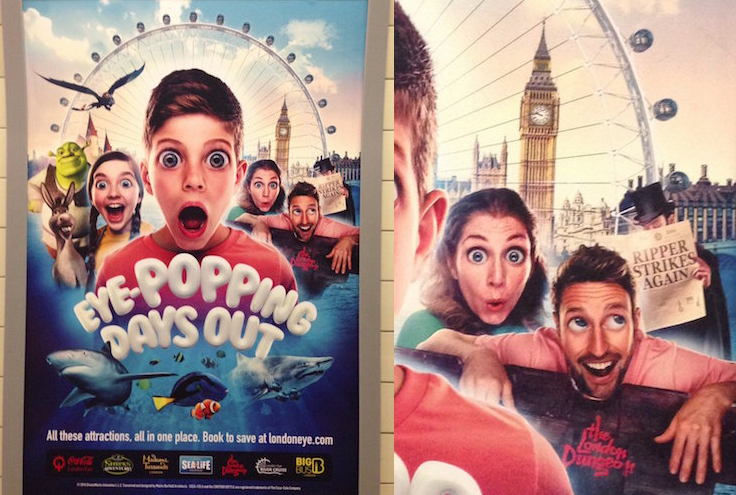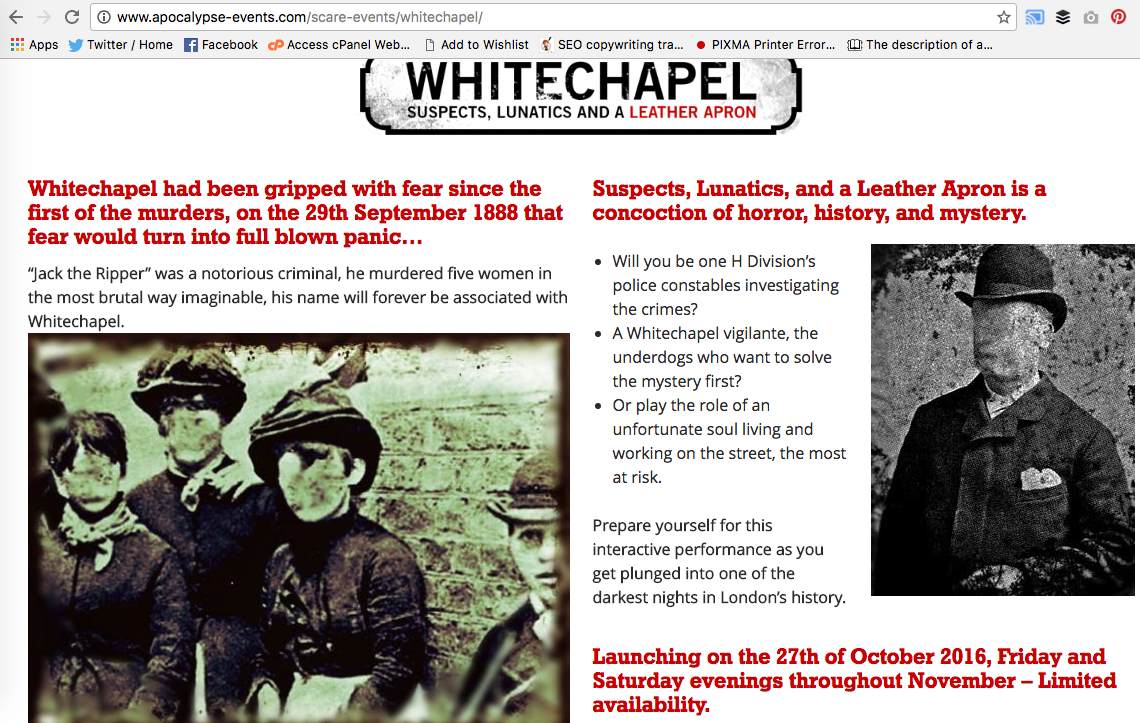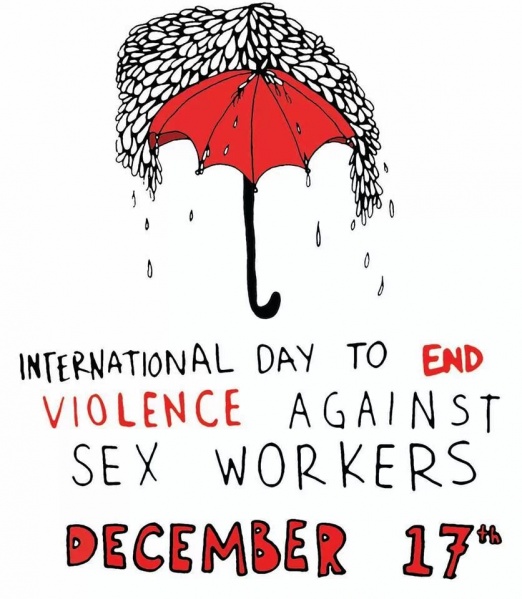 I've written before about my beef with Jack the Ripper tourism, and I recently revisited the subject at an event at Oxford House.*
I've written before about my beef with Jack the Ripper tourism, and I recently revisited the subject at an event at Oxford House.*
We talked about why the Ripper myth has such a hold on people, about the other stories it overshadows, and about the breathtakingly insensitive marketing decisions made by the Ripper tourist trade, from cocktails and cupcakes to burgers and selfies with 'Jack'.
The latest of these sidled into my browser a few days ago: an interactive performance from Apocalypse Events. As you can see from the screencap below they initially used a picture of the Bow Matchwomen with their faces scrubbed out to illustrate their event page. Below this was a picture of Annie Chapman, one of the women killed by 'Jack', also with her face scrubbed out. Women's history literally being erased by Ripper tourism.
Thanks to historian Louise Raw the company have now changed the images and copy on their website for this event, but this is far from the only example.

Violence against women and failed justice
The obsession with the Whitechapel murders means that the story most people associate with east London is one of violence against women and failed justice.
Violence against women hasn’t gone the way of gaslights and top hats. It is incredibly common and frequently lethal, and Ripper tourism helps to trivialise it.
The never ending fascination with 'Jack' is especially galling for many women working in the sex industry, as the five women killed in the Whitechapel Murders - Mary Ann Nichols, Annie Chapman, Lizzie Stride, Catherine Eddowes, Mary Jane Kelly - were all working as prostitutes at the time they were murdered.
In 2015 Laura Watson, spokeswoman for the English Collective of Prostitutes, told the Guardian that:
“We object to the Jack the Ripper tours because they present the gruesome murder of five women as an exciting, tantalising event, glorifying the man whilst invisibilising the women... What a distortion and abuse of our humanity that five women who were tortured to death are of less interest than the monster who killed them.”
Women working in the sex industry, particularly those selling sex on the street, are some of the most vulnerable to violence:
- In a 2001 study of three British cities, it was found that 81 percent of street workers had experienced violence (Church et al 2001).
- A 1999 study of 193 street workers found that 68 per cent had experienced physical assault (Ward et al 1999).
- In 2004, a study of 125 street workers in five cities found that three-quarters had experienced physical violence (Hester and Westmarland 2004).
- A 2004 study of 71 street workers in Bristol (Jeal and Salisbury 2004a) found that rape and physical violence using weapons such as guns, machetes and chainsaws had been experienced by 73 percent.
- Between the early 1990s and early 2000s, at least 60 sex workers were known to have been murdered in the UK, most working on the street (Penfold et al 2004, p.366).
- It has been estimated that street sex workers are twelve times more likely to die from violence at work than other women (Sanders and Campbell 2007, p.2).
 [Source: Phipps, A (2013) 'Violence against sex workers', in Lesley McMillan and Nancy Lombard, eds., Violence Against Women (Research Highlights in Social Work Series), pp87-102. London: Jessica Kingsley Publishers]
[Source: Phipps, A (2013) 'Violence against sex workers', in Lesley McMillan and Nancy Lombard, eds., Violence Against Women (Research Highlights in Social Work Series), pp87-102. London: Jessica Kingsley Publishers]
Alia, a sex worker working in Mile End was quoted in the same Guardian article saying that:
“Rape and torture, let alone the murder of women, shouldn’t be fetishised into an intriguing murder mystery... I know about violence. I’ve been raped and robbed – and when I reported it the police did nothing, and then threatened me with prosecution for prostitution.”
Stigma and whorephobia
The practical vulnerability of street workers is compounded by stigma, 'whorephobia', and police harassment which prevents many women from seeking help or reporting violence.
One of the most famous examples of whorephobia comes from a statement by the Attorney General at 'Yorkshire Ripper' Peter Sutcliffe’s 1981 trial for the murder of at least 13 women: “Some were prostitutes, but perhaps the saddest part of this case is that some were not.” **
Attitudes like this, whether conscious or unconscious, are common and insidious. The silent distinction between 'prostitutes' and 'innocent victims' has surely contributed to the widespread acceptance of the Ripper story as entertainment, and as the defining moment in east London's history.***
The single story
Violence is part of women's history as it is part of women's present, and it's a story that needs to be told. But it must be done with sensitivity, respect, and context, otherwise we're just feeding the problem by reinscribing misogyny.
And there are so many other stories we could tell about east London. It's on a rather different scale of course, but author Chimamanda Ngozi Adichie has spoken brilliantly about the danger of the single story with reference to the story of Africa.
If the single story of our community is about the brutal, unsolved murders of five working class women, how does that shape the way people see us? How does it shape the way we see ourselves?
The aim of our museum is to present an alternative, to amplify some of the stories you haven’t heard before, to show how and where more might be found. By shifting the focus away from 'Jack' we can start to tell a richer story.
*Also on the panel was historian Fern Riddell, who live tweeted her visit to the Ripper Museum which you should read if you haven't already.
**Joan Smith wrote a fantastic essay about the coverage of the 'Yorkshire Ripper' case in her 1989 book Misogynies. You can read most of it on Google Books but it's worth getting hold of a copy if you can.
***If you'd like to read more around this I can't recommend City of Dreadful Delight by Judith Walkowitz highly enough.





